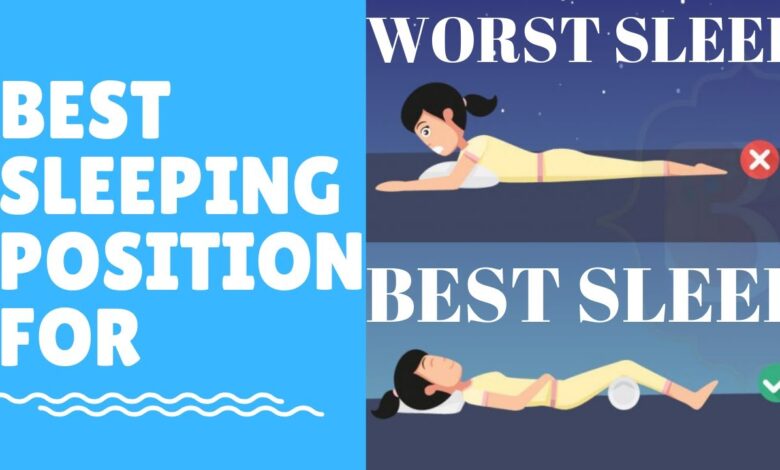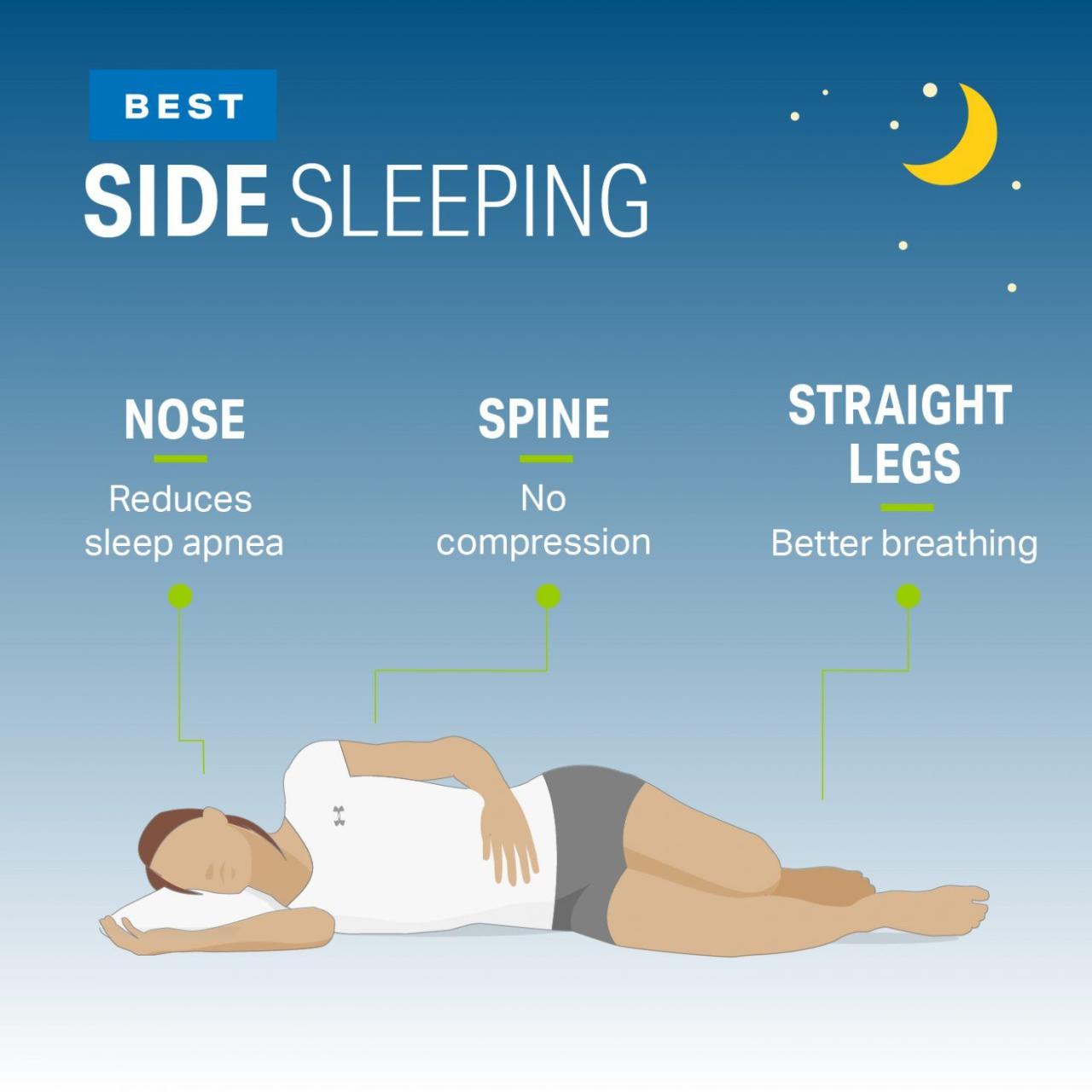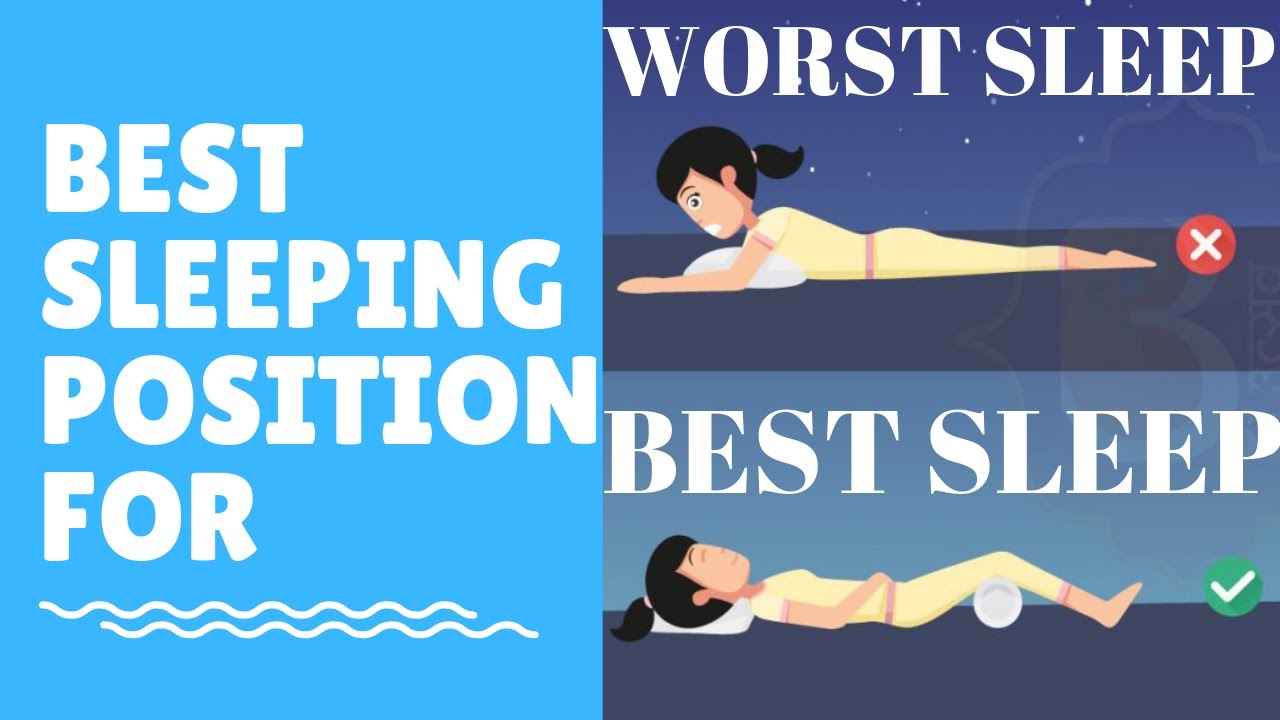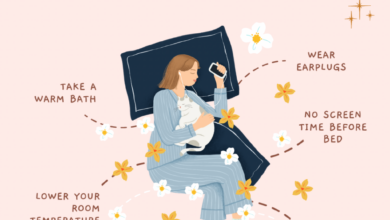
Ranking the Best and Worst Sleep Positions for a Better Nights Rest
Ranking the best and worst sleep positions takes center stage, as we delve into the fascinating world of sleep posture. How we position our bodies during sleep impacts everything from our sleep quality to our physical well-being. From the classic fetal position to the more adventurous stomach sleeper, each position has its unique benefits and drawbacks.
So, let’s explore the science behind sleep positions and discover which ones are truly the best and worst for achieving a restful night’s sleep.
Understanding the impact of sleep positions on our health is essential for maximizing our overall well-being. This article aims to provide a comprehensive guide, helping you identify the best sleep position for your specific needs and preferences. We’ll discuss the science behind each position, examine their impact on common sleep issues like back pain and snoring, and offer practical tips for transitioning to a more beneficial sleep posture.
The Science Behind Sleep Positions: Ranking The Best And Worst Sleep Positions

While many of us simply drift off to sleep without much thought about our posture, the way we sleep can have a significant impact on our health and well-being. Research has shown that sleep positions can influence everything from sleep quality to respiratory health and even our musculoskeletal system.
Sleep Quality and Sleep Positions
Sleep positions can directly affect sleep quality. Studies have shown that certain positions may be more conducive to restful sleep, while others can disrupt sleep patterns and lead to sleep disturbances. For instance, sleeping on your back is often recommended for promoting better sleep quality, as it helps to keep the airway open and reduce snoring.
However, if you suffer from back pain, sleeping on your side with a pillow between your knees may be more comfortable.
Respiratory Health and Sleep Positions
The position in which we sleep can also impact our respiratory health. Sleeping on your back can increase the risk of snoring and sleep apnea, conditions that disrupt breathing during sleep. This is because lying on your back can cause the tongue and soft palate to relax and block the airway.
For individuals with these conditions, sleeping on their side is often recommended to alleviate these issues.
Musculoskeletal Health and Sleep Positions
Our sleep positions can also affect our musculoskeletal health, particularly in the long term. Sleeping on your side can help to reduce pressure on your spine and alleviate back pain, especially when you use a pillow to support your knees and hips.
However, sleeping on your stomach can strain your spine and neck, leading to discomfort and potential pain. It’s important to find a sleep position that aligns with your individual needs and helps to maintain proper spinal alignment.
Long-Term Effects of Sleep Positions, Ranking the best and worst sleep positions
The long-term effects of different sleep positions on overall health and well-being are still being investigated, but some preliminary research suggests that certain positions may have advantages. For example, sleeping on your side with a pillow between your knees may help to improve blood circulation and reduce pressure on the spine, potentially reducing the risk of back pain and other musculoskeletal issues.
Conversely, sleeping on your stomach may increase the risk of neck pain and digestive problems.
Ultimate Conclusion

Ultimately, the best sleep position is the one that allows you to fall asleep easily, stay asleep throughout the night, and wake up feeling refreshed and energized. While there are no one-size-fits-all answers, understanding the science behind sleep positions empowers you to make informed choices that prioritize your sleep health and overall well-being.
So, experiment with different positions, pay attention to how your body feels, and find the sleep posture that helps you achieve your best night’s sleep.
Figuring out the best sleep position for a good night’s rest is like navigating a minefield of comfort and discomfort. But it’s not just about physical comfort – a restless night can be a sign of something deeper, like anxiety.
Understanding the different types of anxiety and how to cope can be a huge step in achieving a more peaceful sleep. For a deeper dive into anxiety, check out this helpful resource: common types of anxiety and how to cope.
Once you’ve addressed any underlying anxieties, you can focus on finding the ideal sleep position for a truly restful night.
Figuring out the best sleep position can feel like a quest for the holy grail, right? While some swear by the fetal position, others find their sweet spot in a starfish pose. But before you get too caught up in sleep posture, you might want to consider incorporating another healthy habit: taking cold showers.
Do cold showers offer legit health benefits ? The answer might surprise you. After all, a good night’s sleep is just as important as a refreshing shower, so why not optimize both?
You know how we all obsess over finding the perfect sleep position? Turns out, it’s not just about comfort, it’s about optimizing our sleep quality. But let’s face it, sometimes even the best sleep position can’t conquer those pesky procrastination demons! If you find yourself struggling to get things done, check out these 5 tips for squashing procrastination.
Once you’ve mastered the art of productivity, you can go back to focusing on that perfect sleep position, knowing you’ll wake up refreshed and ready to conquer the day!



